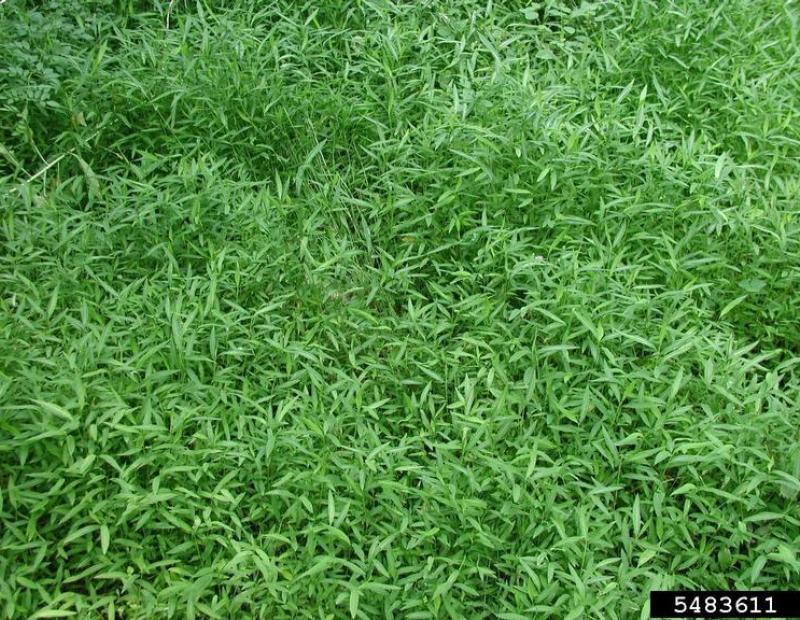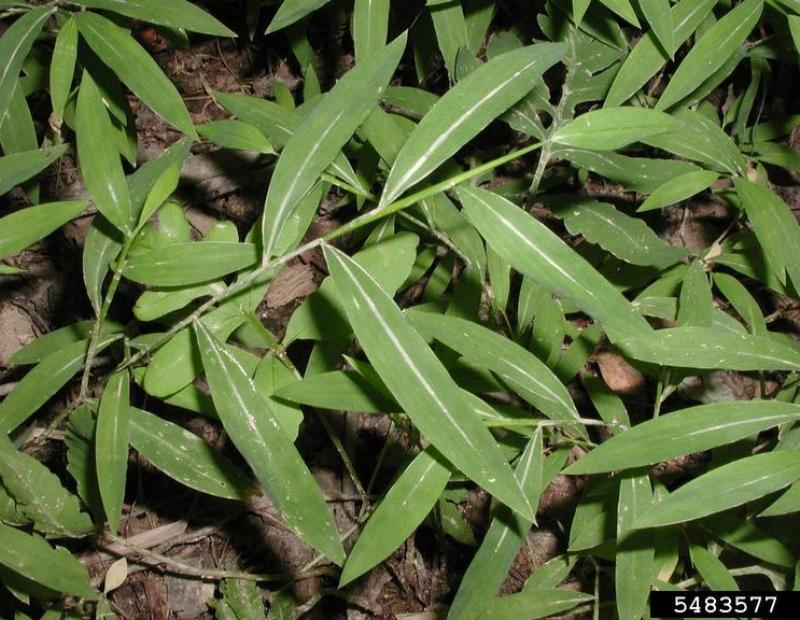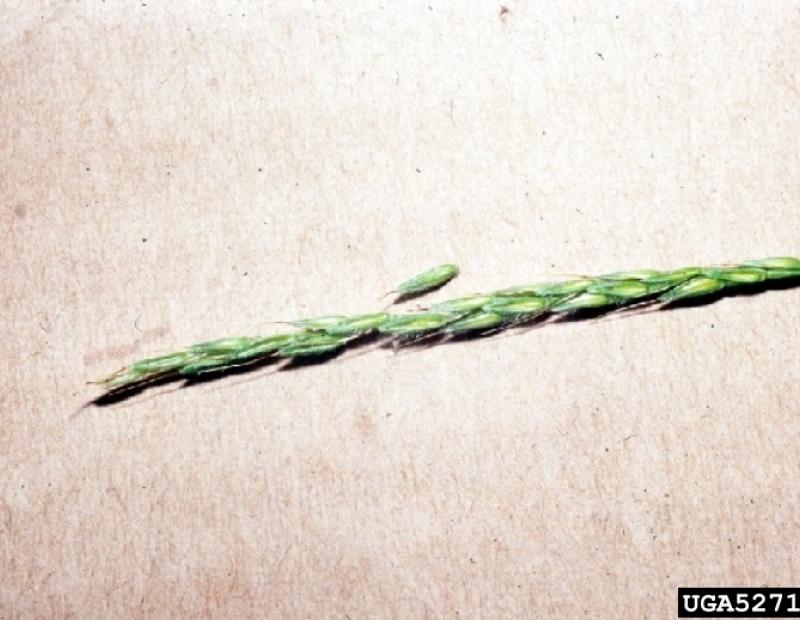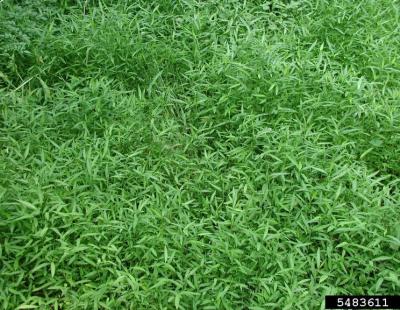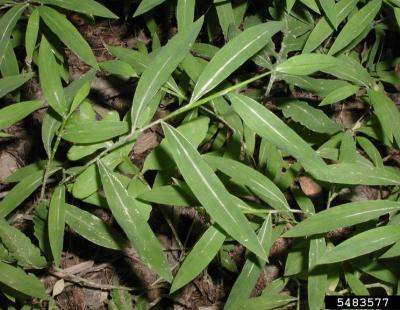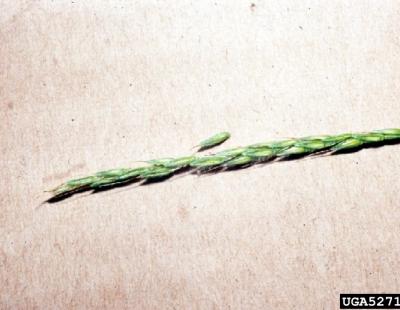- Terrestrial Plants
- Grass-like Plant
Japanese stiltgrass poses a significant threat to native wildlife because of its highly adaptable nature. This plant can thrive in a wide range of ecosystems including: forested edges, floodplains, fields, stream banks, trails, as well as being a formidable weed in lawns and gardens. Japanese stiltgrass tend to establish themselves well in disturbed areas, sprawling past these locations once established. They are capable of growing in many light conditions, especially thriving in shaded areas. Ecosystems that have established populations of Japanese stiltgrass tend to see a decrease in biodiversity. These plants crowd out early season plants, and displace habitat for native animals, in turn fostering beneficial habitat for other invasive species. It has also been observed that native grazers, such as white-tailed deer, avoid Japanese stiltgrass, propagating their ability to thwart native plants. Each individual plant can produce between 100 and 1,000 seeds, which can remain in the soil bank for at least 3 years.
Japanese stiltgrass is native to Japan, India, Malaysia and China, but has been introduced throughout a large part of the United States, from New York to Florida, and as far west to Illinois, Arkansas and Louisiana. It was first reported in the United States in Tennessee in 1919, as it was used as a packing materal to transport goods to North America. The plant extended its range north to reach New England by the 1980's, and at this time established itself in 24 eastern states.
Japanese stiltgrass resembles very small bamboo in its appearance. They are annual grasses that can grow to be up to 2 m tall. The leaves found on the stiltgrass are 1-3 inches long, asymetrical, and are alternately arranged on the stalk. The lance-shaped leaves have a prominent stripe of silvery, reflective hairs up the length of the surface. One or two flower spikes form at the top of each stem during late summer to early fall. Flowers either require pollination or are self-fertile depending on soil moisture and availbility of sunlight. Seeds are mechanically dispersed and can travel long distances by attachment to passing humans and animals.
Japanese stiltgrass is widespread throughout the Lower Hudson region, and is considered a New York prohibited plant and may not be sold, imported, purchased, transported, introduced or propagated in the state. It can be seen considerably along disturbed areas and edges and is very prominent along roadsides and trails, where humans and animals often further the spread to new locations.

